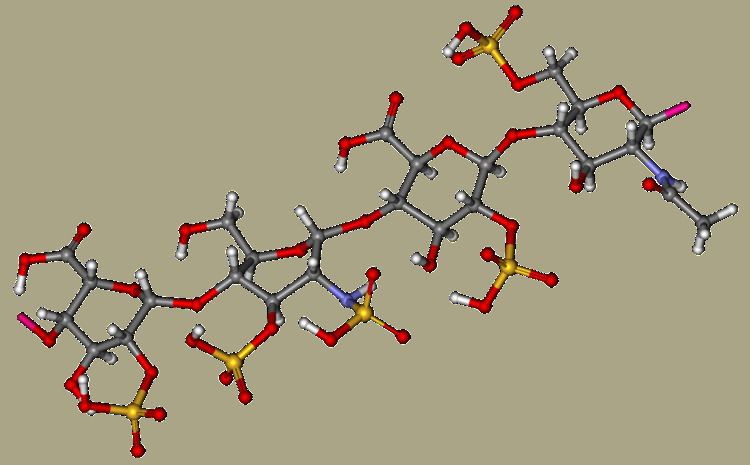AHFS/Drugs.com Monograph License data US FDA: enoxaparin | MedlinePlus a696006 Pregnancycategory B | |
 | ||
Trade names Lovenox, Clexane, Xaparin, others Routes ofadministration subcutaneous (SC), intravenous (IV) | ||
Enoxaparin sodium, sold under the brand name Lovenox among others, is a blood thinner. It used to treat and prevent deep vein thrombosis (DVT) and pulmonary embolism (PE) including during pregnancy and following certain types of surgery. It is also used in those with acute coronary syndrome (ACS) and heart attacks. It is given by injection just under the skin or into a vein. Other uses include inside kidney dialysis machines.
Contents
- Medical uses
- Monitoring
- Reversal agent
- Pregnancy
- Side effects
- Boxed warning
- Mechanism of action
- Pharmacokinetics
- Drug class
- References
Common side effects include bleeding, fever, and swelling of the legs. Bleeding may be serious especially in those who are undergoing a spinal tap. Use during pregnancy appears to be safe for the baby. Enoxaparin is in the low molecular weight heparin family of medications.
Enoxaparin was first made in 1981 and approved for medical use in 1993. It is on the World Health Organization's List of Essential Medicines, the most effective and safe medicines needed in a health system. Enoxaparin is available as a generic medication. The wholesale cost in the developing world is about 1.90 to 10.80 USD per day. In the United States the wholesale cost is about 14.13 USD per day as of 2016. Enoxaparin is made from heparin.
Medical uses
Monitoring
Enoxaparin has predictable absorption, bioavailability, and distribution therefore monitoring is not typically done. However, there are instances where monitoring may be beneficial for special populations, for example individuals with kidney insufficiency or those that are obese. In this case, anti-Xa units can be measured and dosing adjusted accordingly.
Reversal agent
Protamine sulfate is less effective at reversing enoxaparin compared to heparin, with a maximum neutralization of approximately 60% of the anti-factor Xa effect.
Pregnancy
Side effects
Uncommon (<1%)
Common (>1%)
Frequency under investigation
Boxed warning
The FDA issued a revision to the boxed warning for enoxaparin in October 2013. The revision recommends exercising caution regarding when spinal catheters are placed and removed in persons taking enoxaparin for spinal puncture or neuroaxial anesthesia. It may be necessary to delay anticoagulant dosing in these persons in order to decrease the risk for spinal or epidural hematomas, which can manifest as permanent or long-term paralysis. Persons at risk for hematomas may present with indwelling epidural catheters, concurrent use of medications that worsen bleeding states such as non-steroidal anti-inflammatory drugs (NSAIDs), or a past medical history of epidural or spinal punctures, spinal injury, or spinal deformations. The FDA recommends that at-risk persons be monitored for bleeding and neurological changes.
Mechanism of action
Enoxaparin binds to antithrombin (a circulating anticoagulant) to form a complex that irreversibly inactivates clotting factor Xa. It has less activity against factor IIa (thrombin) compared to unfractionated heparin (UFH) due to its low molecular weight.
Pharmacokinetics
Absorption: Bioavailability (subcutaneous injection) ~ 100%
Distribution: Volume of distribution (anti-Factor Xa activity) = 4.3 liters
Metabolism: Enoxaparin is metabolized in the liver into low molecular weight species by either or both desulfation and depolymerization.
Elimination: A single dose of a subcutaneous injection of enoxaparin has an elimination half-life of 4.5 hours. Approximately 10%-40% of the active and inactive fragments from a single dose are excreted by the kidneys. Dose adjustments based on kidney function are necessary in persons with reduced kidney function.
Drug class
Enoxaparin belongs to the class of drugs known as low molecular weight heparins. Other drugs in this class include dalteparin, fondaparinux and tinzaparin.
